You don’t have to be a geologist to enjoy really good Iceland rock formations. Iceland stands as a testament to this, as it boasts incredibly fascinating geological marvels that are sure to shock and awe most of us. Anything from animal-shaped formations at sea, to man-made canyons with huge pillars of symmetrical, hexagonal basalt rock.
The Land of Fire and Ice is a geological marvel that never ceases to amaze us. With ongoing volcanic activity for more than 100 million years, these rock formations stand as proof of the extreme development of this island. Check out the most impressive Iceland rock formations to visit on your trip to Iceland.
Iceland's rock formations: a must-see in Iceland
The most common type you will see around the island is the Iceland hexagonal rocks. These are formed when the lava halts and starts to cool. When a lava stream stops, it often starts to cool from the top down, creating these “centres” where the lava starts to cool first.
As it hardens, it starts to crack when colder lava is pulled into these centres, making it crack in almost perfect hexagonal shapes. When the surface is cooled down, the lower parts of it start to cool right underneath, slowly building on this shape until it reaches the bottom of the lava masses.
Fun fact: the better the lava is “mixed” into a uniform type of slur, the more likely it is that these hexagons are going to be symmetrical and approximately the same size. This means that the nicely formed basalt columns Iceland have, are due to the mixing quality of the volcano it came from. We give a big thanks to these volcanoes for their effort!
Elephant Rock
Probably the most famous rock formation in Iceland is the Elephant Rock. This gentle giant is strikingly similar to an elephant the size of a titan, rising up from the ocean with the trunk mostly submerged in the waters. You can only make out an elephant’s head, but it is detailed enough to be one of the most impressive Iceland rock formations you can see. On the head, you can easily make out the eye, the trunk, the cheeks, and parts of the ears.
How to get there
But where is Elephant Rock formation in Iceland? You will need to take a boat, plane, or helicopter to visit this marvel. To get there, you will need to go to the Westman Islands and then jump on your transportation of choice. The boat trips are by far the most common ways to see it and only take an hour to the rock and back to port, so we suggest you take one of those.
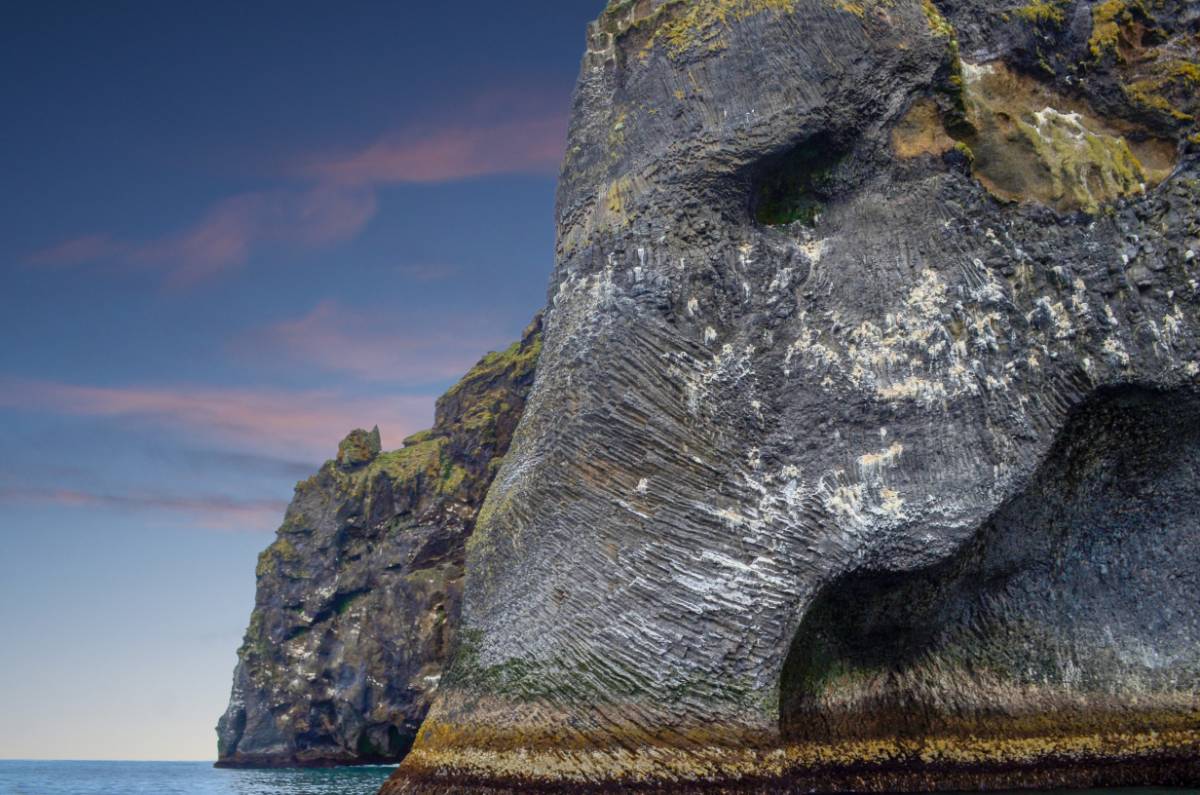
Stuðlagil Canyon
On the list of breathtaking scenery and Iceland rock formations, Stuðlagil Canyon is our number one. This place is made up of those perfectly shaped Iceland hexagonal rocks and is divided in half by a river that looks like a fantasy location. These columns rise straight up from the surface of the water and reach both impressive heights and numbers. This area claims to have the largest number of hexagonal basalt columns Iceland has.
A newly discovered geological wonder
This canyon used to be covered by a huge river, fed by a nearby glacier and filled with glacial sedimentary that turned the water brown and sludgy. It was so extreme that you couldn’t cross it anywhere, and today we know why. When the people constructed a dam upstream, the amount of water in the dam was drastically reduced and uncovered this geological wonder. The feed into the river is now fed from the Hálslón reservoir, so there is no sludge in it and that’s why it’s now this beautiful colour.
You can find Stuðlagil Canyon in the eastern part of Iceland, ca 72 kilometres west of Egilsstaðir. It’s a remote area, but well worth the drive and a hike.
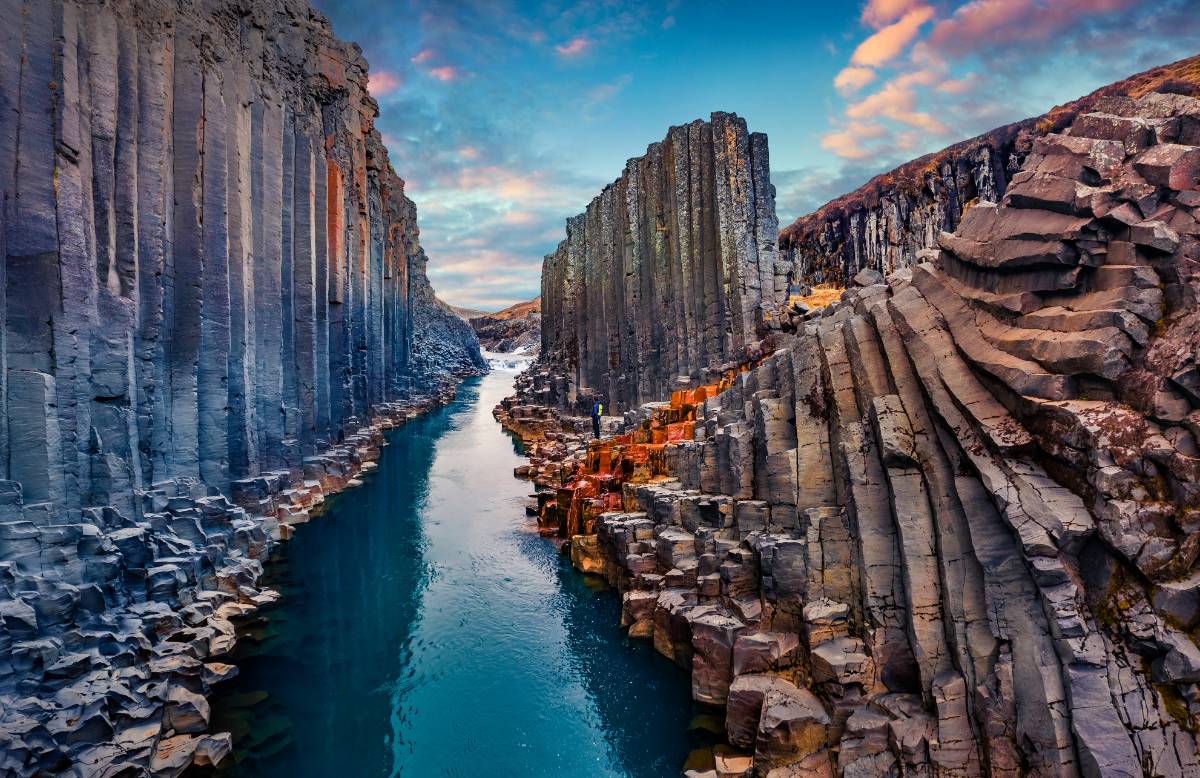
Reynisdrangar
In the waters, right outside of the famous black beach Reynisfjara, you can find a beautiful set of basalt columns, standing tall in the rough Atlantic Sea. Reynisdrangar is one of the most famous Iceland rock formations and carries fascinating tales of how it came to be. This Iceland beach rock formation is said to be the result of two trolls that, for one or other reason, stayed out too long and turned to stone when the sun rose.
Believe it or not: this group of Iceland hexagonal rocks sued to be a part of the mainland. The rough sea and weather have cut this rock formation off, and now they stand alone in the sea, slowly crumbling into the ocean.
You can easily see this formation on your way around Ring Road 1, making it a stop that doesn’t demand any significant hiking or long driving. If you want to stay in the area to explore more, the formation is right next to the town of Vík.
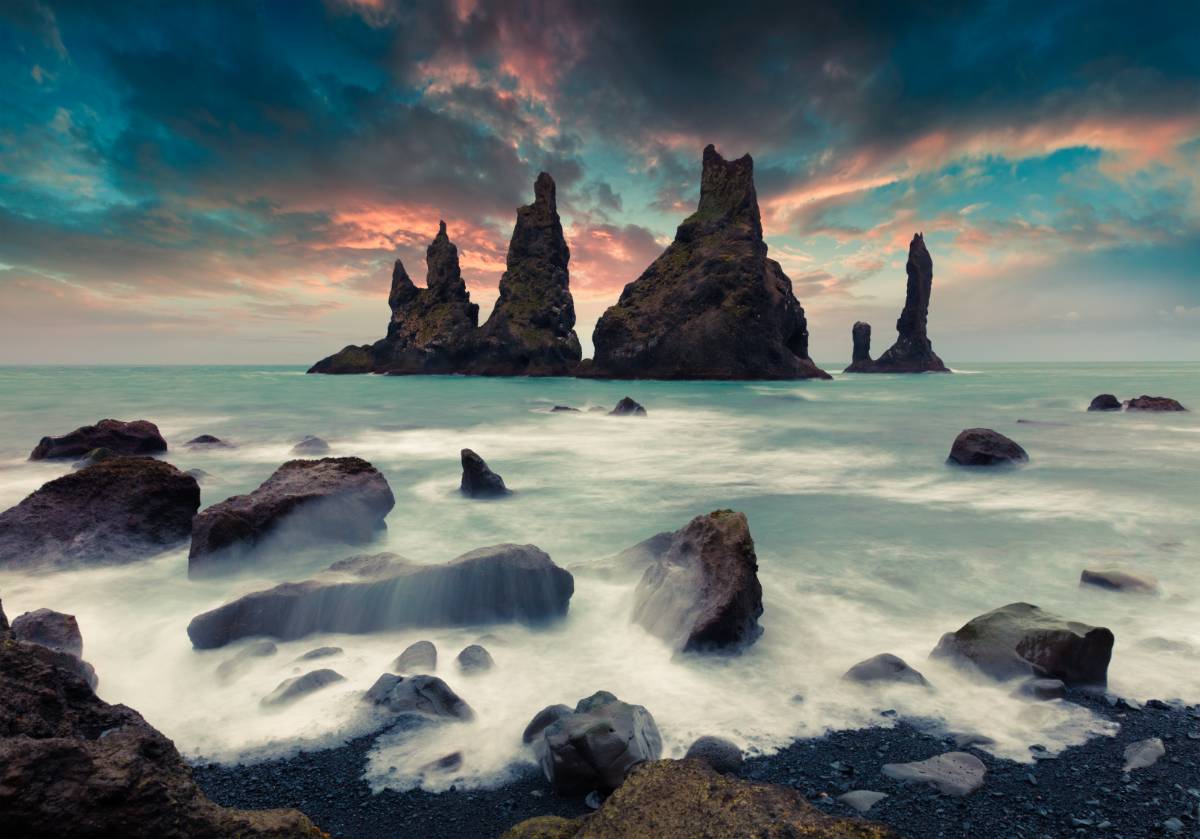
Aldeyjarfoss
In the northern part of Iceland, another beautiful waterfall is hidden in the rough landscape. Aldeyjarfoss is a unique sight, as this mighty waterfall is fed by a glacier river that cuts through rough terrain from the highlands all the way to the northern coast. This is the same river that feeds Guðfoss.
Why this is one of the most impressive Iceland rock formations is due to the structure of the rock around the waterfall. At the surface level of the waters, you will see masses of crumbled pieces of hexagonal pillars. Right above them are the basalt pillars that haven’t crumbled yet, and at the top, you find distorted layers of massive rock that look the exact opposite of the symmetrical basalt pillars.
To get to Aldeyjarfoss, you need to drive roughly 44 kilometres up in the mountains from the Goðafoss location. This makes it a bit tricky to reach, but we promise it’s going to be well worth the drive. As a reference, these Iceland rock formations are roughly 72 kilometres from Akureyri.
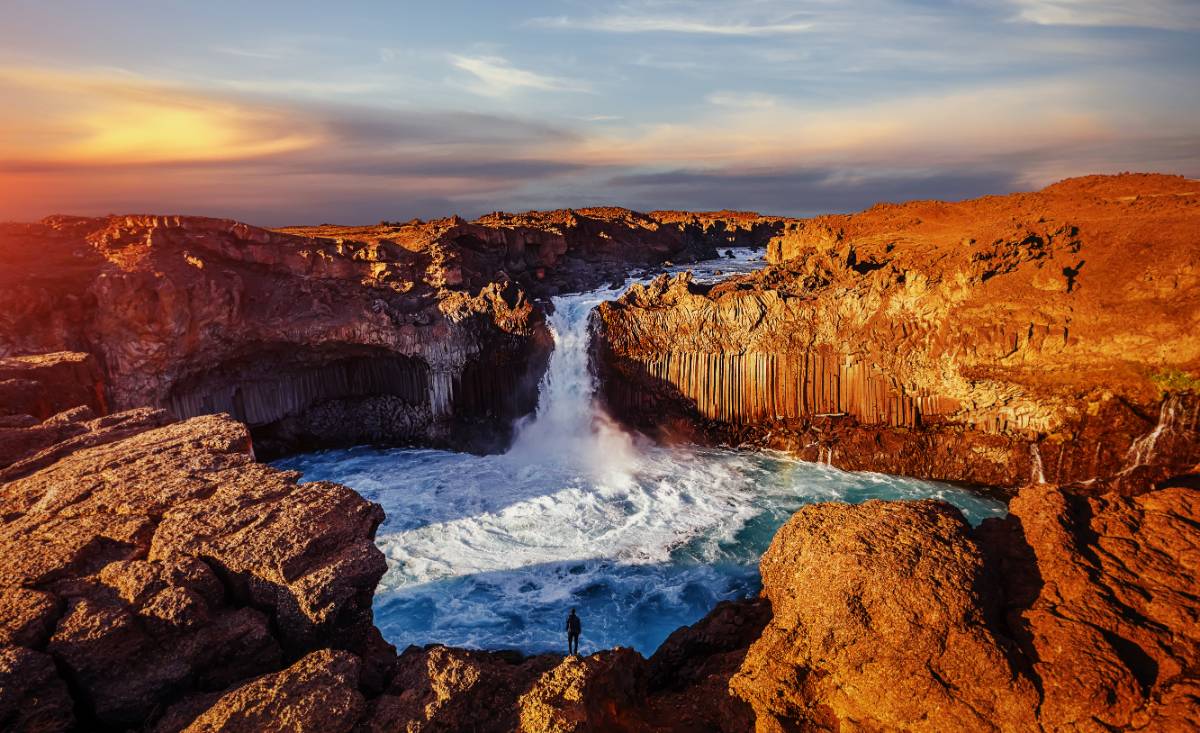
Svartifoss
When it comes to Svartifoss, it’s hard to say what’s more impressive; the cube-like basalt columns that stretch themselves out like a giant organ across the sky or the 20-metre majestic waterfall that it’s wrapped itself around. The name itself means Black Falls which is on point when describing this natural wonder.
Located in the infamous Vatnajökull National Park, this is a must-visit spot for all nature lovers. The site can be reached by taking a short hike (roughly 1.5 kilometres). The trail is pretty uphill as you can imagine, but still a simple enough hike that anyone can easily make the climb irrespective of experience or fitness level.
What’s even more interesting than the site itself is how these hexagonal rock formations are formed. The rock formations effect is created by the lava flow that cools down extremely slowly, causing crystallisation. It truly is a very literal representation of why Iceland is known as the Land of Fire and Ice.
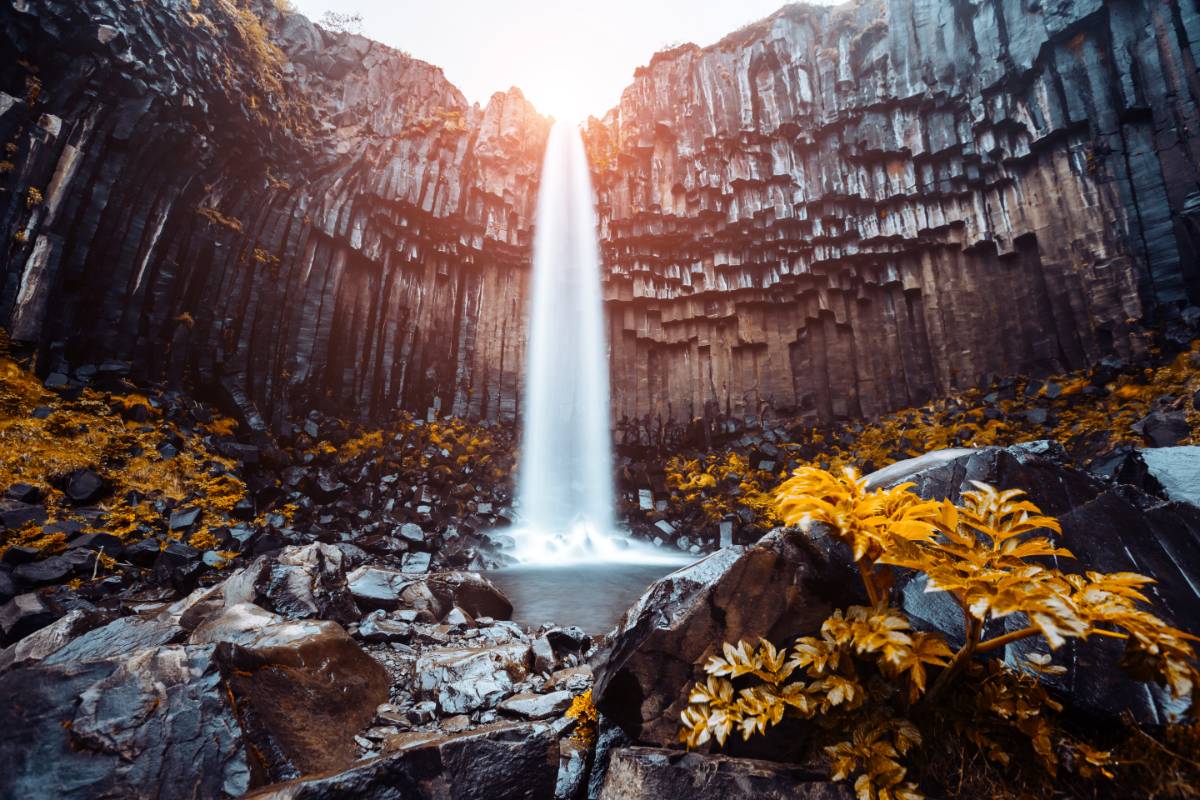
Hvitserkur
On the east side of Vatnsnes Peninsula, stands Hvitserkur rising 15 meters from the beach. Hvitserkur translates to The White Caftan which refers to its white colour. Unfortunately, this colour doesn’t have any mystical or geological basis but is because of the birds doing their business whilst perched on this interesting rock formation.
By being a mere 30 kilometres from one of the most popular routes in Iceland, the Ring Road, there truly is no excuse to stop by this incredible display of nature.
Hvitserkur and Trolls
This rock formation does however have an fascinating story attached to it. It is believed to be an evil troll that was caught by the early morning sunlight after yet another night of impish naughtiness and then turned to stone.
To be fair, the reality of this basalt cliff formation is just as interesting and impressive as folklore about trolls. The reason the formation looks like some strange gateways to other worlds with its two holes is because of its constant battle with the elements and the Arctic Ocean. It will undoubtedly lose this battle one day, but in the meantime, there was human intervention to keep the formation with us for just a bit longer by fortifying the structure with concrete.
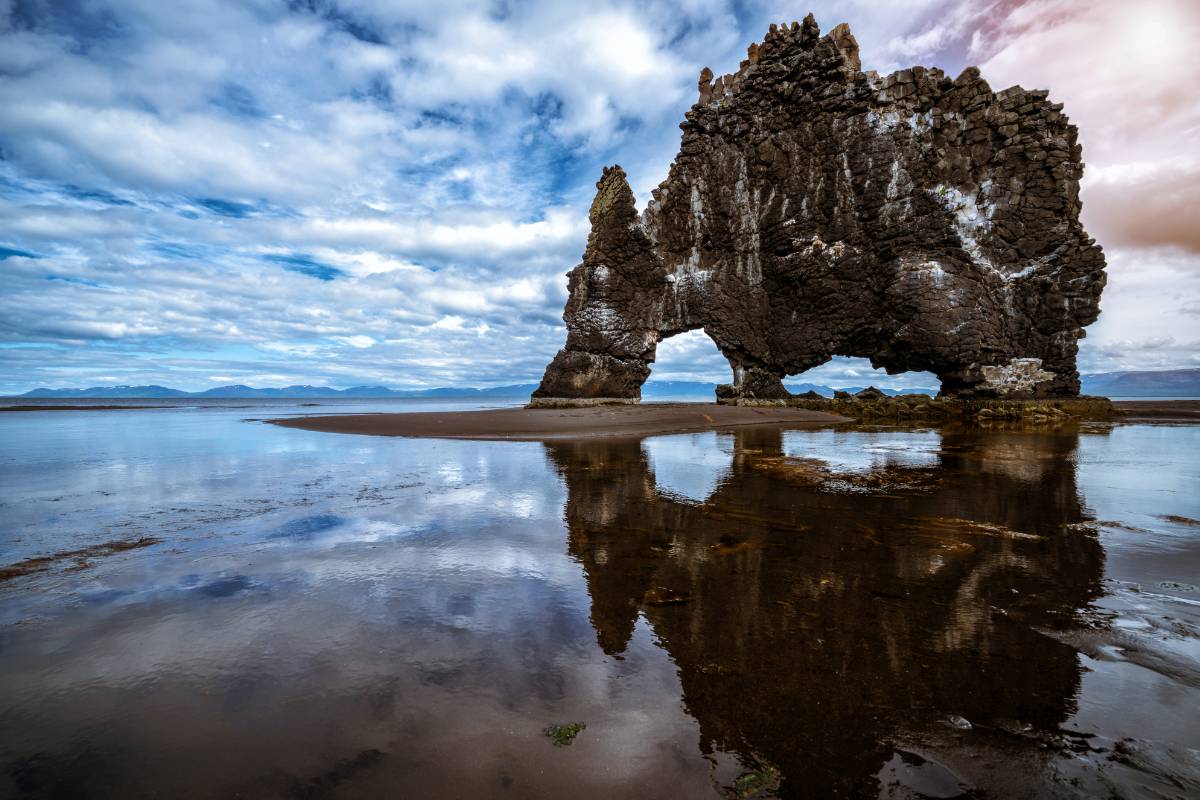
Let your imagination go wild
Visiting all of these sites is pretty easy when taking some of the popular road trip routes on the island. Just keep in mind that certain areas require a 4x4 vehicle, such as a Suzuki Jimny or a Toyota Land Cruiser, if you are a traveling in group. Make sure you enquire at the car rental before you find yourself trying to traverse an SUV off-road route with a little Toyota.


 By
By


